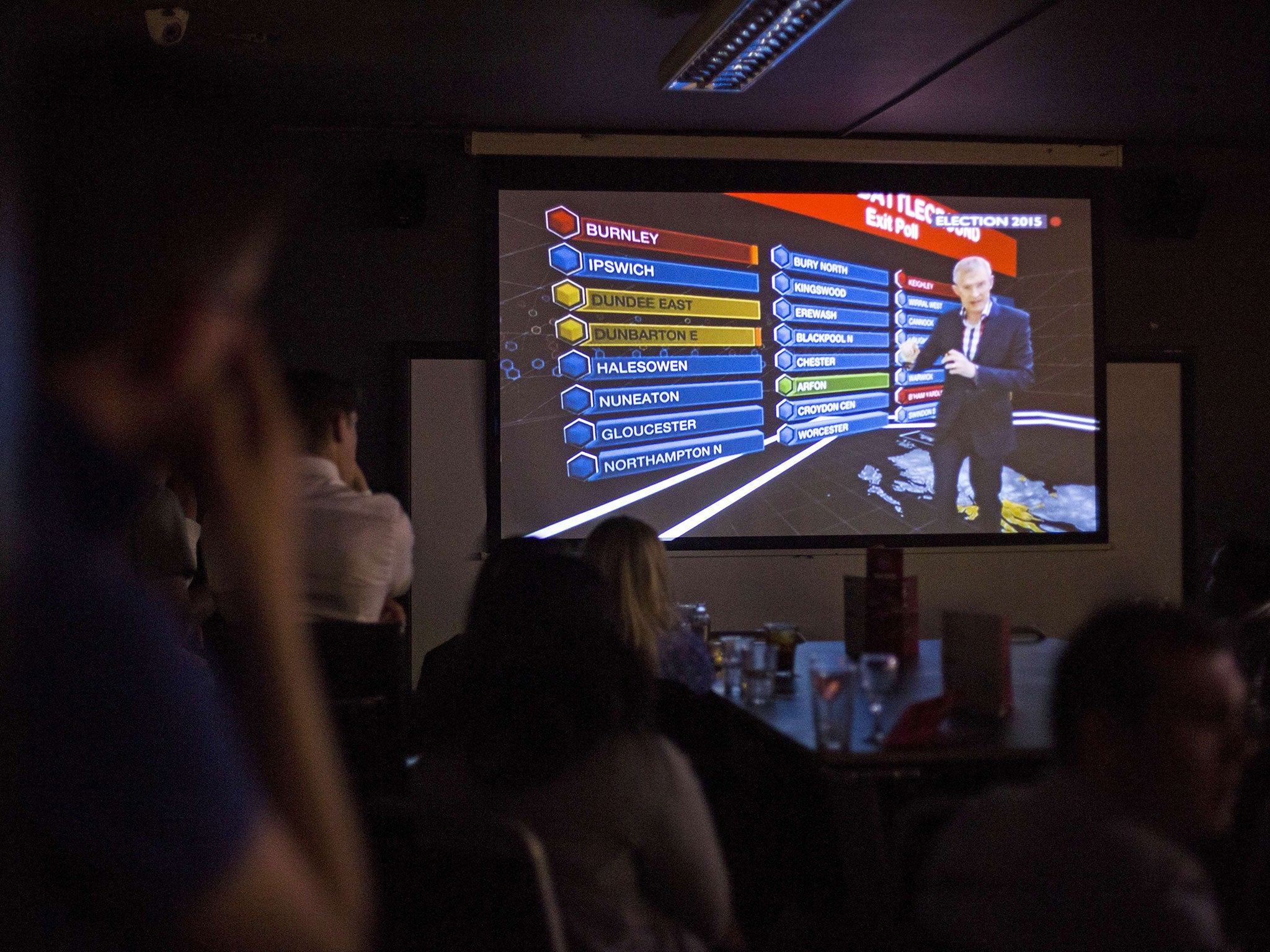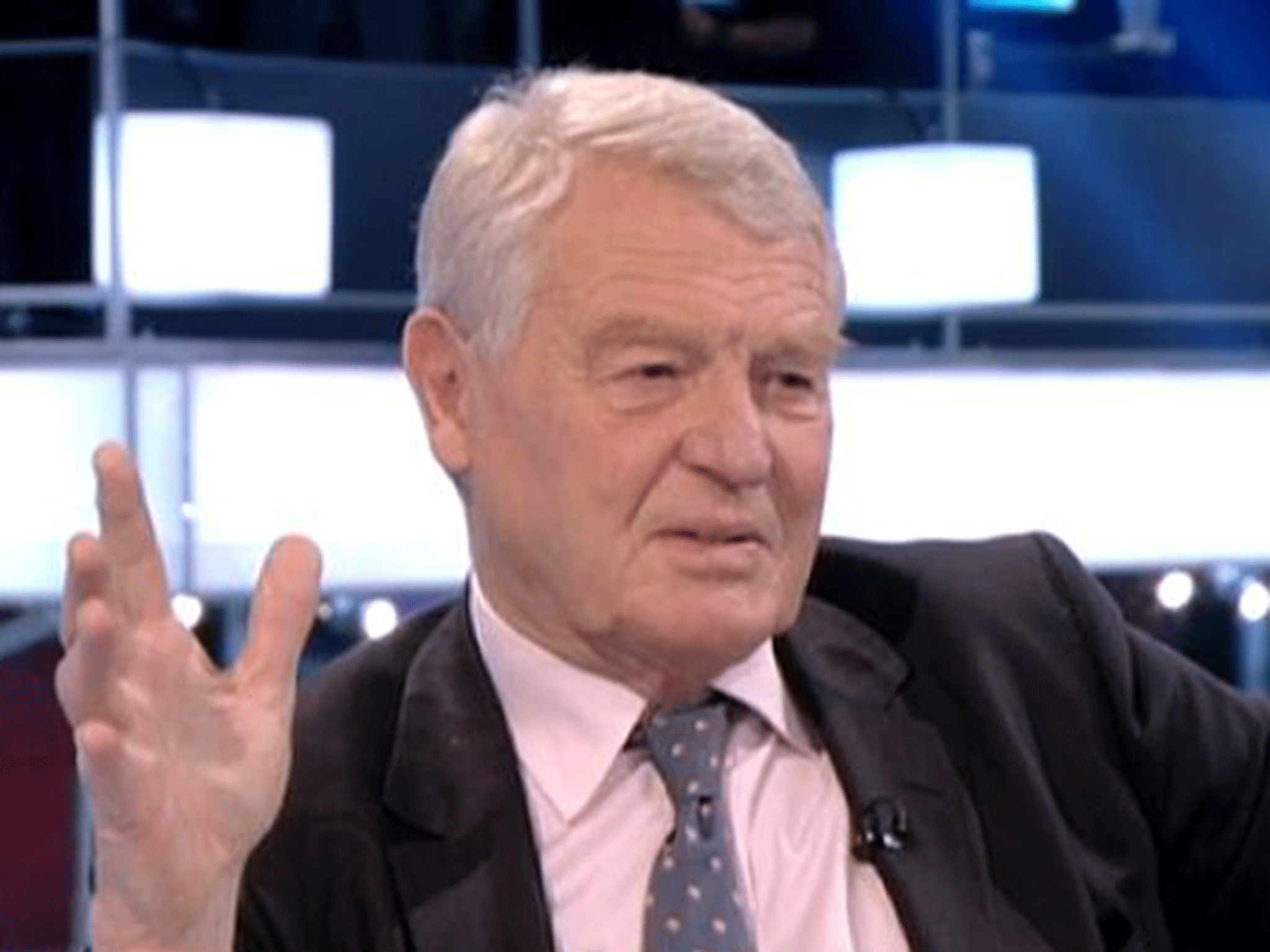Election results: Just how did the exit poll manage to get it so right?
Especially when the others were so wrong - Professor John Curtice tells Chris Green the secrets of his success

Your support helps us to tell the story
From reproductive rights to climate change to Big Tech, The Independent is on the ground when the story is developing. Whether it's investigating the financials of Elon Musk's pro-Trump PAC or producing our latest documentary, 'The A Word', which shines a light on the American women fighting for reproductive rights, we know how important it is to parse out the facts from the messaging.
At such a critical moment in US history, we need reporters on the ground. Your donation allows us to keep sending journalists to speak to both sides of the story.
The Independent is trusted by Americans across the entire political spectrum. And unlike many other quality news outlets, we choose not to lock Americans out of our reporting and analysis with paywalls. We believe quality journalism should be available to everyone, paid for by those who can afford it.
Your support makes all the difference.As polling stations across the UK opened for business on election day, eight men sat in a room in the basement of the BBC’s Broadcasting House in central London and enjoyed the calm before the storm.
Their challenge over the next 15 hours in what was widely predicted to be the closest-fought election in decades was to produce an accurate prediction of the number of seats each party would hold in the House of Commons. The “exit poll eight” were in for a long day.
When the results of their work flashed across the nation’s TV screens at exactly 10pm, Labour and the Liberal Democrats reacted with shock – while the SNP and the Conservatives could not believe their luck. Far from being a close-run thing, as all the polls had predicted, it gave the Tories 316 seats, Labour 239, the SNP 58 and the Lib Dems just 10.
Lord Ashdown’s now infamous response – “I can tell you that is wrong. If these exit polls are right, I’ll publicly eat my hat” – summed up the presiding mood. But as the results began to roll in, it became clear that the eight men had come closer to the truth than any other previous poll. So how did they do it?

The first thing to understand is that the exit poll carried out for the BBC, ITV and Sky News had a totally different methodology to the constant stream of surveys published in the run-up to the election. Instead of relying on random-dial phone interviews or paying people to complete internet surveys, it requires real voters to take part in a second, dummy ballot.
According to Joe Twyman, head of political and social research at YouGov, a “common misconception” is that exit polls simply rely on “old ladies with clipboards” standing outside polling stations and interviewing voters. That may have been the case in the past, but now the process is far more sophisticated.
On 7 May, a team of around 400 researchers from Ipsos MORI and GfK NOP stood outside 141 polling stations in 133 constituencies across the UK. Over the course of the day, 22,000 voters were approached at random and asked to fill out dummy ballot papers, which they then deposited in an exit poll box.
The exit poll ballot is done in secret, just like the real thing, and no additional information about each voter is recorded. But the exit pollsters do know one crucial thing about the people whose data they are gathering: they have actually voted, not just told an interviewer that they intend to.
Nick Moon, managing director of GfK NOP social research, said one reason behind the success of the exit poll may be its high participation rate. Around three in four people approached outside polling stations agreed to take part, compared to a rate of one in 10 for the earlier opinion polls. This increases the chances of the sample being more representative.
Throughout election day, the Ipsos and GfK fieldworkers periodically phoned in their ballot box results to their head offices. The data was then compiled and relayed via a secure internet connection to Professor John Curtice at Strathclyde University, who headed the team of eight sitting in the BBC’s basement.
Alongside him was Dr Rob Ford, from the University of Manchester; Dr Stephen Fisher, from the University of Oxford; Dr Jouni Kuha, from the LSE; Jon Mellon, from Nuffield College, Oxford; Colin Rallings and Michael Thrasher, both professors at Plymouth University; and finally Patrick English, one of Dr Ford’s PhD students.
Crucially, the same polling stations are surveyed at each general election, allowing the men to compare the data with what they gathered five years earlier and work out the relative change in each party’s share of the vote. The results are then statistically modelled, taking into account the characteristics of the constituencies where the polling stations are located, before being extrapolated on a national scale.
It is a complex and time-consuming process which has to be done on the hoof while the results from the dummy ballot boxes pour in. As many people wait until after work to vote, there is a sudden rush of results between 7pm and 9pm which can throw off the team’s previous work. “There’s always pressure towards the end,” Professor Curtice said. “You’ve got quite a lot of time to spend looking at half the data, but you don’t know what’s going to happen with the other half. You have very little time, so it’s all got to be working like clockwork.”
Although the team were understandably nervous when the exit poll produced its surprising seat projections, they “relaxed visibly” when the declarations began. “If you end up with an exit poll that looks different from what the opinion polls are saying, then you kind of scratch your head and think, ‘Is this really right?’ But all you can do at that point is to report honestly what the data says,” Professor Curtice said. “I’ve learnt to expect the unexpected in elections. I’ve been through enough now where the outcome was not in line with expectations. Rule number one is once you go into the exit poll, just forget everything you’ve ever heard in the past six weeks – you have to.”
Exit poll: In numbers
316: Number of seats the Tories would win, according to the exit poll. The party won 331.
22,000 voters responded to the exit poll, conducted by Ipsos MORI and GfK NOP
3 in 4 voters agreed to take part, compared to one in 10 for opinion polls
Join our commenting forum
Join thought-provoking conversations, follow other Independent readers and see their replies
Comments